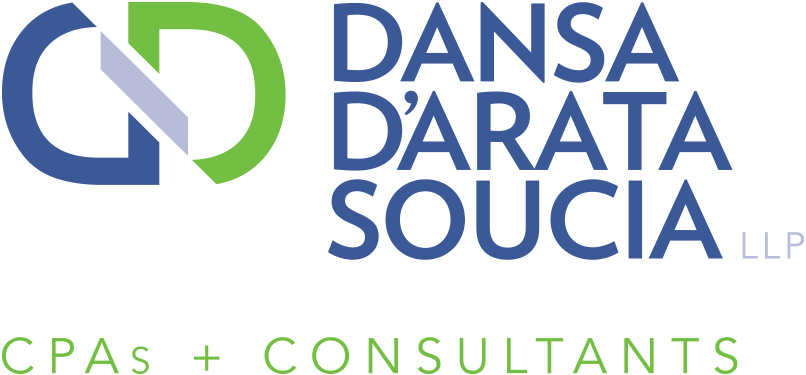Turning employee ideas into profitable results
 Many businesses train employees how to do their jobs and only their jobs. But amazing things can happen when you also teach staff members to actively involve themselves in a profitability process — that is, an ongoing, idea-generating system aimed at adding value to your company’s bottom line.
Many businesses train employees how to do their jobs and only their jobs. But amazing things can happen when you also teach staff members to actively involve themselves in a profitability process — that is, an ongoing, idea-generating system aimed at adding value to your company’s bottom line.
Let’s take a closer look at how to get your workforce involved in coming up with profitable ideas and then putting those concepts into action.
6 steps to implementation
Without a system to discover ideas that originate from the day-in, day-out activities of your business, you’ll likely miss opportunities to truly maximize profitability. What you want to do is put a process in place for gathering profit-generating ideas, picking out the most actionable ones and then turning those ideas into results. Here are six steps to implementing such a system:
- Share responsibility for profitability with your management team.
- Instruct managers to challenge their employees to come up with profit-building ideas.
- Identify the employee-proposed ideas that will most likely increase sales, maximize profit margins or control expenses.
- Tie each chosen idea to measurable financial goals.
- Name those accountable for executing each idea.
- Implement the ideas through a clear, patient and well-monitored process.
For the profitability process to be effective, it must be practical, logical and understandable. All employees — not just management — should be able to use it to turn ideas and opportunities into bottom-line results. As a bonus, a well-constructed process can improve business skills and enhance morale as employees learn about profit-enhancement strategies, come up with their own ideas and, in some cases, see those concepts turned into reality.
A successful business
Most employees want to not only succeed at their own jobs, but also work for a successful business. A strong profitability process can help make this happen. To learn more about this and other ways to build your company’s bottom line, contact us.
© 2018


 With rising health care costs, claiming whatever tax breaks related to health care that you can is more important than ever. But there’s a threshold for deducting medical expenses that may be hard to meet. Fortunately, the Tax Cuts and Jobs Act (TCJA) has temporarily reduced the threshold.
With rising health care costs, claiming whatever tax breaks related to health care that you can is more important than ever. But there’s a threshold for deducting medical expenses that may be hard to meet. Fortunately, the Tax Cuts and Jobs Act (TCJA) has temporarily reduced the threshold. Natural disasters and other calamities can affect any company at any time. Depending on the type of business and its financial stability, a few weeks or months of lost income can leave it struggling to turn a profit indefinitely — or force ownership to sell or close. One way to guard against this predicament is through the purchase of business interruption insurance.
Natural disasters and other calamities can affect any company at any time. Depending on the type of business and its financial stability, a few weeks or months of lost income can leave it struggling to turn a profit indefinitely — or force ownership to sell or close. One way to guard against this predicament is through the purchase of business interruption insurance. Tax credits reduce tax liability dollar-for-dollar, potentially making them more valuable than deductions, which reduce only the amount of income subject to tax. Maximizing available credits is especially important now that the Tax Cuts and Jobs Act has reduced or eliminated some tax breaks for businesses. Two still-available tax credits are especially for small businesses that provide certain employee benefits.
Tax credits reduce tax liability dollar-for-dollar, potentially making them more valuable than deductions, which reduce only the amount of income subject to tax. Maximizing available credits is especially important now that the Tax Cuts and Jobs Act has reduced or eliminated some tax breaks for businesses. Two still-available tax credits are especially for small businesses that provide certain employee benefits. Every company, big or small, should have a mission statement. Why? When carefully conceived and well written, a mission statement can serve as a beacon to the world — letting everyone know what the business stands for and where it’s headed. It can build customer loyalty and mobilize people behind a common cause. And it can define the company’s collective personality, provide clear direction, and most of all, serve as a starting point for all of your marketing efforts. Here are some elements to consider when writing a mission statement:
Every company, big or small, should have a mission statement. Why? When carefully conceived and well written, a mission statement can serve as a beacon to the world — letting everyone know what the business stands for and where it’s headed. It can build customer loyalty and mobilize people behind a common cause. And it can define the company’s collective personality, provide clear direction, and most of all, serve as a starting point for all of your marketing efforts. Here are some elements to consider when writing a mission statement: Working from home has become commonplace. But just because you have a home office space doesn’t mean you can deduct expenses associated with it. And for 2018, even fewer taxpayers will be eligible for a home office deduction.
Working from home has become commonplace. But just because you have a home office space doesn’t mean you can deduct expenses associated with it. And for 2018, even fewer taxpayers will be eligible for a home office deduction. You’ve probably heard or read the term “big data” at least once in the past few years. Maybe your response was a sarcastic “big deal!” under the assumption that this high-tech concept applies only to large corporations. But this isn’t necessarily true. With so much software so widely available, companies of all sizes may be able to devise and implement big data strategies all their own.
You’ve probably heard or read the term “big data” at least once in the past few years. Maybe your response was a sarcastic “big deal!” under the assumption that this high-tech concept applies only to large corporations. But this isn’t necessarily true. With so much software so widely available, companies of all sizes may be able to devise and implement big data strategies all their own. Under the Tax Cuts and Jobs Act (TCJA), individual income tax rates generally go down for 2018 through 2025. But that doesn’t necessarily mean your income tax liability will go down. The TCJA also makes a lot of changes to tax breaks for individuals, reducing or eliminating some while expanding others. The total impact of all of these changes is what will ultimately determine whether you see reduced taxes. One interrelated group of changes affecting many taxpayers are those to personal exemptions, standard deductions and the child credit.
Under the Tax Cuts and Jobs Act (TCJA), individual income tax rates generally go down for 2018 through 2025. But that doesn’t necessarily mean your income tax liability will go down. The TCJA also makes a lot of changes to tax breaks for individuals, reducing or eliminating some while expanding others. The total impact of all of these changes is what will ultimately determine whether you see reduced taxes. One interrelated group of changes affecting many taxpayers are those to personal exemptions, standard deductions and the child credit. For many years, owners of small and midsize businesses looked at outsourcing much like some homeowners viewed hiring a cleaning person. That is, they saw it as a luxury. But no more — in today’s increasingly specialized economy, outsourcing has become a common way to cut costs and obtain expert assistance.
For many years, owners of small and midsize businesses looked at outsourcing much like some homeowners viewed hiring a cleaning person. That is, they saw it as a luxury. But no more — in today’s increasingly specialized economy, outsourcing has become a common way to cut costs and obtain expert assistance. The IRS has just announced that it will begin accepting 2017 income tax returns on January 29. You may be more concerned about the April 17 filing deadline, or even the extended deadline of October 15 (if you file for an extension by April 17). After all, why go through the hassle of filing your return earlier than you have to?
The IRS has just announced that it will begin accepting 2017 income tax returns on January 29. You may be more concerned about the April 17 filing deadline, or even the extended deadline of October 15 (if you file for an extension by April 17). After all, why go through the hassle of filing your return earlier than you have to?